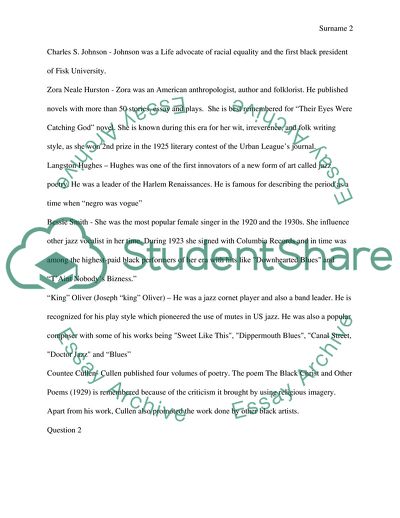Cite this document
(The Harlem Renaissance Assignment Example | Topics and Well Written Essays - 2750 words, n.d.)
The Harlem Renaissance Assignment Example | Topics and Well Written Essays - 2750 words. https://studentshare.org/sociology/1881143-the-harlem-renaissance
The Harlem Renaissance Assignment Example | Topics and Well Written Essays - 2750 words. https://studentshare.org/sociology/1881143-the-harlem-renaissance
(The Harlem Renaissance Assignment Example | Topics and Well Written Essays - 2750 Words)
The Harlem Renaissance Assignment Example | Topics and Well Written Essays - 2750 Words. https://studentshare.org/sociology/1881143-the-harlem-renaissance.
The Harlem Renaissance Assignment Example | Topics and Well Written Essays - 2750 Words. https://studentshare.org/sociology/1881143-the-harlem-renaissance.
“The Harlem Renaissance Assignment Example | Topics and Well Written Essays - 2750 Words”. https://studentshare.org/sociology/1881143-the-harlem-renaissance.


